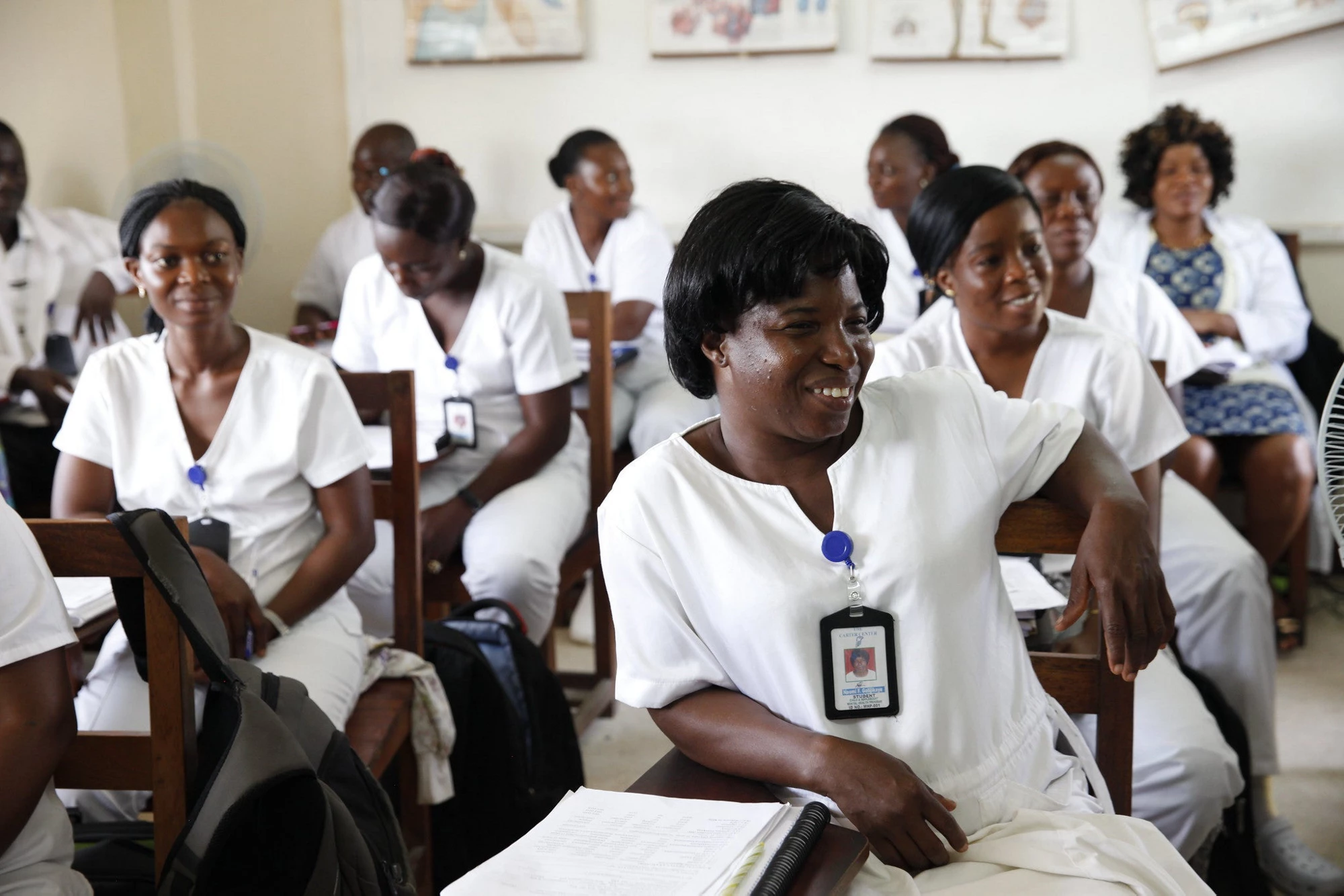 护士们在参加培训
护士们在参加培训
The COVID-19 pandemic is the biggest challenge of our time. As the coronavirus continues to spread across 200+ countries and territories, with more than a million cases diagnosed and significant loss of life, the ability to respond by limiting transmission, keeping vulnerable populations safe, and maintaining a functional health system will determine the speed of recovery in each country. Unfortunately, most countries are ill-equipped to respond to a pandemic of this scale. Part of this can be attributed to shortages and limitations of the nursing workforce.
As the pandemic sweeps the globe, nurses are on the front lines of the response and are going above and beyond to keep health systems functional. Physically and mentally exhausted, nurses are working around the clock to provide care, putting themselves and their families at risk of infection. And they’re doing so in a setting where personal protective equipment (PPE) supplies are dwindling. Data from Italy revealed that 20% of health workers were infected with COVID-19, and 14% in Spain; in China more than 3,300 were infected as of early March.
Even before this crisis, the global nursing workforce was not growing fast enough to meet universal health coverage targets and the Sustainable Development Goals (SDGs) by 2030. Although the global shortage of nurses slightly decreased from 6.6 million in 2016 to 5.9 million in 2018, almost 90% of the deficit is in low- and lower-middle-income countries. Here the number of trained nurses is barely keeping pace with population growth. Health emergencies exacerbate these imbalances and put further stress on the existing health workforce.
The critical role of nursing
Nurses are frequently the first and highest-level provider for primary care. They are essential to expanding delivery of health services to remote populations. Evidence shows that nurses are also instrumental in improving health sector productivity and patient outcomes, and they are less expensive to train and deploy than other professional health workers. Investing in the nursing workforce presents a triple return on health, economic growth, and gender equity.
Nurses are essential to achieving universal health coverage (UHC). They make up the largest proportion of the health workforce, are responsible of 90% of the contacts between patients and health professionals , and are integral to primary care services, population health, other specialized care, policy, and management.
The world needs 9 million more nurses and midwives to achieve universal health coverage by 2030. To close this gap, nurse graduates would need to increase by 8% per year on average globally. Without that, current trends indicate that we would have only 36 million nurses by 2030, with the deficit concentrated in Africa, Southeast Asia, and the eastern Mediterranean.
Investing in nursing: Evidence from Africa
The World Bank, in collaboration with the International Council of Nurses (ICN), Jhpiego, and the East Central and South African College of Nursing (ECSACON), analyzed the education and labor markets for nurses across 16 countries of Eastern, Central, and Southern Africa. The upcoming report shows that education investments need to be more targeted. Low absorption rates of nurse graduates into the workforce, often fueled by recruitment inefficiencies or undesirable working conditions, results in unemployment among nurses despite the overall shortage. For nurses who have jobs, poor working conditions and inadequate training restrain performance and productivity, leading to high levels of attrition and absenteeism.
As countries face the challenges of the COVID-19 pandemic, the importance of a fit-for-purpose health workforce within a functional health system becomes paramount. The Global Health Security (GHS) report shows that most countries lack the necessary support for health care workers to ensure adequate epidemic and pandemic response. For example, only 3% of the countries show a public commitment to prioritizing health care services for workers who become sick as a result of participating in a public health response.
Prioritizing and protecting the health care workforce is critical now — not only because their own lives are at risk, but also because patients rely on them to continue providing care. As the coronavirus continues to spread in the weeks and months ahead, the world is at risk of exhausting our nurses at a time when we need them most.



Join the Conversation